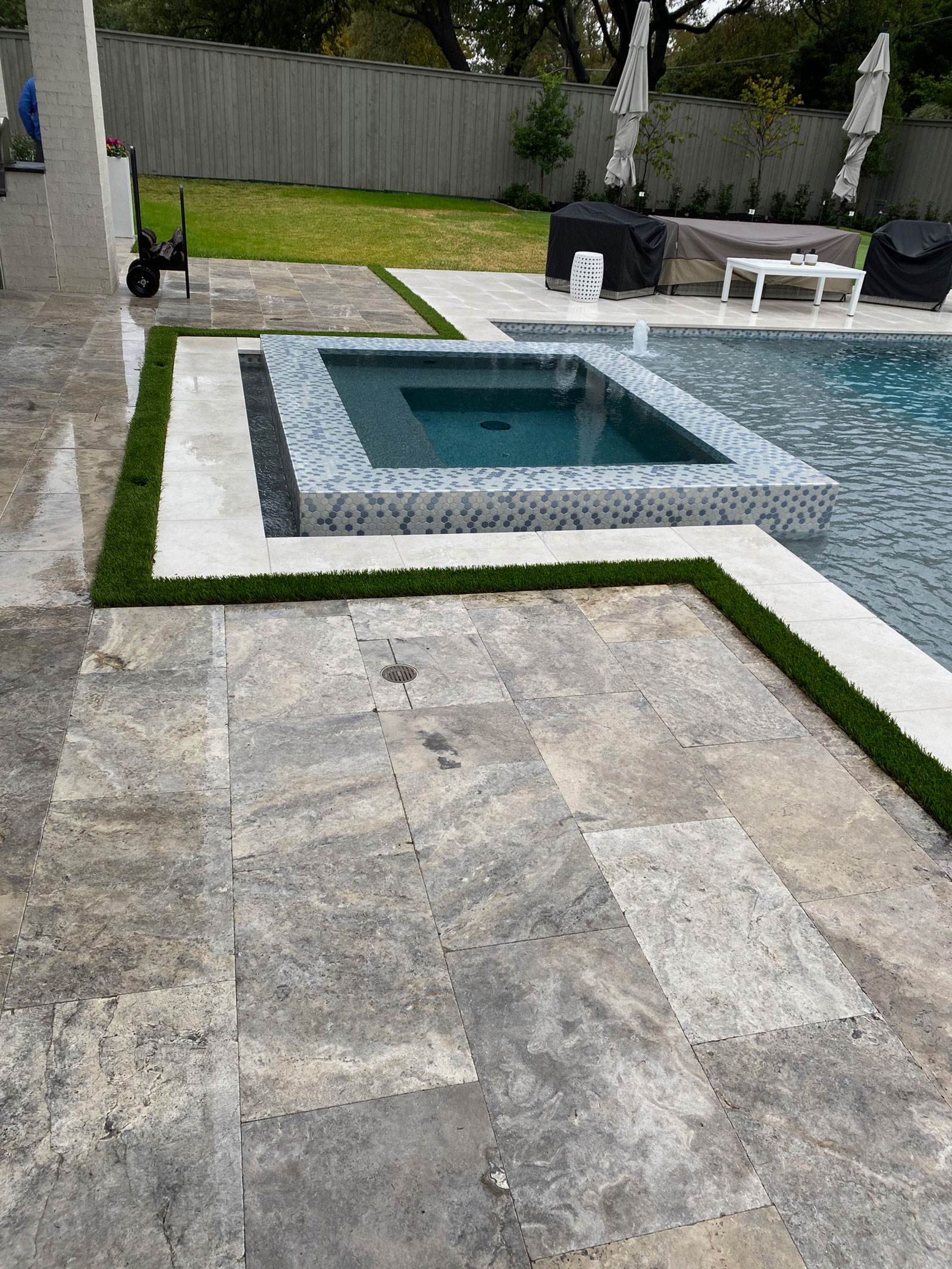Travertine is one of the most timeless and elegant natural stones used for flooring, countertops, pool decks, and outdoor patios. But not all travertine is created equal. The quality can vary significantly depending on its grade, finish, and origin. Knowing how to tell the difference between high-quality and low-quality travertine can help you make a smarter investment and avoid issues like cracking, discoloration, or uneven surfaces later on.
1. Check for Consistent Color and Veining
High-quality travertine has a uniform color tone throughout the tile or slab. While natural variations are expected, the overall hue should be consistent across pieces from the same batch.
-
Poor-quality travertine often shows dramatic color inconsistencies, muddy undertones, or abrupt streaks.
-
Look for balanced veining—good travertine displays soft, natural movement, not chaotic blotches.
2. Inspect the Surface Fillings
Travertine naturally forms with small holes and pores. To create a smooth surface, these voids are filled with resin or cement.
-
Premium travertine will have even, durable, and well-matched fillings that blend seamlessly with the stone.
-
Lower-quality travertine often has poorly matched or crumbling fillers that can fall out over time, leaving pits and weak spots.
3. Feel the Density and Weight
Denser travertine is stronger, more durable, and less porous.
-
Pick up a piece—heavier tiles generally indicate higher density, meaning the stone will absorb less water and resist cracking.
-
Lower-density travertine feels lighter and chalkier, which can lead to structural weakness, especially outdoors.
4. Examine the Edges and Cutting Precision
Precision cutting and smooth edges are a clear sign of professional fabrication.
-
High-quality travertine will have clean, square edges that align well during installation.
-
Cheap or mass-produced tiles often show chipped, uneven, or rough edges, which cause irregular grout lines and poor fits.
5. Check the Finish Quality
Travertine comes in several finishes—polished, honed, tumbled, and brushed.
-
A quality finish should be evenly applied and consistent in sheen across the surface.
-
Inconsistent polishing or dull patches are indicators of rushed processing or poor factory control.
6. Consider the Grade
Travertine is typically categorized into three grades:
-
Premium (First Grade): Uniform color, minimal holes, consistent thickness.
-
Standard (Second Grade): Some variation in color and filling but still structurally sound.
-
Commercial (Third Grade): Significant holes, color inconsistency, and possible structural imperfections.
If you’re installing travertine in a high-traffic or outdoor area, premium or standard grades are worth the investment for long-term durability.
7. Ask About Origin and Sourcing
Travertine is quarried around the world—Italy, Turkey, Mexico, and the U.S. are top producers.
-
Italian and Turkish travertine are often considered superior due to strict quarrying standards and better selection processes.
-
Reliable suppliers will always disclose the origin and grade certification of their stone.
8. Perform a Water Absorption Test
A quick way to test porosity: place a few drops of water on the surface.
-
If it absorbs slowly, it’s dense and high-quality.
-
If it darkens immediately, it’s more porous and likely to stain or deteriorate faster.
Final Thoughts – How to tell if travertine is good quality?
Good quality travertine should feel dense, balanced, and naturally beautiful—not brittle or patchy. Always buy from a trusted supplier who can guarantee grade consistency and proper sealing. When properly sourced and maintained, premium travertine can last for decades, adding timeless elegance to your home or outdoor space.

